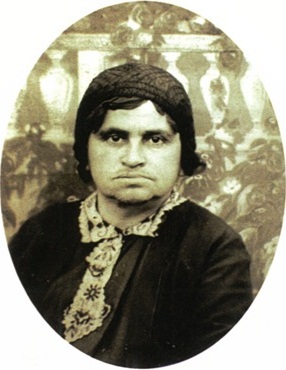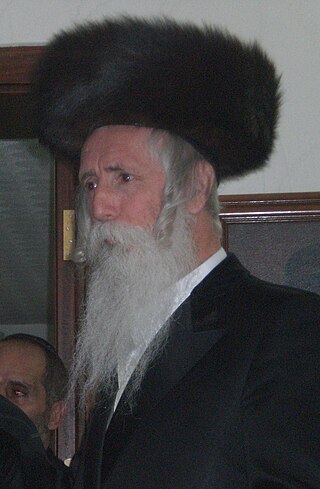
Rabbinic literature, in its broadest sense, is the entire spectrum of works authored by rabbis throughout Jewish history. The term typically refers to literature from the Talmudic era, as opposed to medieval and modern rabbinic writings. It aligns with the Hebrew term Sifrut Chazal, which translates to “literature [of our] sages” and generally pertains only to the sages (Chazal) from the Talmudic period. This more specific sense of "Rabbinic literature"—referring to the Talmud, Midrashim, and related writings, but hardly ever to later texts—is how the term is generally intended when used in contemporary academic writing. The terms mefareshim and parshanim almost always refer to later, post-Talmudic writers of rabbinic glosses on Biblical and Talmudic texts.

Agudath Israel of America is an American organization that represents Haredi Orthodox Jews. It is loosely affiliated with the international World Agudath Israel. Agudah seeks to meet the needs of the Haredi community, advocates for its religious and civil rights, and services its constituents through charitable, educational, and social service projects across North America.

Breslov is a branch of Hasidic Judaism founded by Rebbe Nachman of Breslov (1772–1810), a great-grandson of the Baal Shem Tov, founder of Hasidism. Its adherents strive to develop an intense, joyous relationship with God, and receive guidance toward this goal from the teachings of Rebbe Nachman.

Yeshiva Rabbi Chaim Berlin or Yeshivas Rabbeinu Chaim Berlin is an American Haredi Lithuanian-type boys' and men's yeshiva in Brooklyn, New York. The school's divisions include a preschool, a yeshiva ketana, a mesivta, a college-level beth midrash, and Kollel Gur Aryeh, its post-graduate kollel.
In Jewish law and history, Acharonim are the leading rabbis and poskim living from roughly the 16th century to the present, and more specifically since the writing of the Shulchan Aruch in 1563 CE.

Spinka is the name of a Hasidic group within Haredi Judaism. The group originated in a city called Szaplonca, in Máramaros County, Kingdom of Hungary.

Mordechai Tzemach Eliyahu, was an Israeli rabbi, posek, and spiritual leader.

Ohr Somayach is a yeshiva based in Jerusalem founded in 1970 catering mostly to young Jewish men, usually of college age, who are already interested in learning about Judaism. It is known as a "baal teshuva" yeshiva since it caters to Jews with little or no background in Judaism, but with an interest in studying the classic texts such as the Talmud and responsa. Students are recruited either locally or from other countries where the yeshiva has established branches, such as in the United States, Canada, South Africa, United Kingdom, Australia, Ukraine and Russia.

Tomchei Tmimim is the central Yeshiva of the Chabad-Lubavitch Hasidic movement. Founded in 1897 in the town of Lubavitch by Rabbi Sholom Dovber Schneersohn, it is now an international network of institutions of advanced Torah study, the United Lubavitcher Yeshivoth.
Ammiel Hirsch is an American Reform rabbi and attorney. He is the senior rabbi of Stephen Wise Free Synagogue and former executive director of the Association of Reform Zionists of America/World Union for Progressive Judaism, North America. In 2018, The Jerusalem Post named him among “The 50 Most Influential Jews of the Year.” In 2016, City & State New York magazine praised him as “the borough's most influential voice” for Manhattan's more than 300,000 Jews, and, in 2015, the New York Observer named him among “New York’s Most Influential Religious Leaders.” He has written two books: "The Lilac Tree: A Rabbi's Reflections on Love, Courage, and History" (2023) and "One People, Two Worlds: A Reform Rabbi and an Orthodox Rabbi Explore the Issues That Divide Them" (2003), which he co-authored with Rabbi Yaakov Yosef Reinman.
Feldheim Publishers is an American Orthodox Jewish publisher of Torah books and literature. Its extensive catalog of titles includes books on Jewish law, Torah, Talmud, Jewish lifestyle, Shabbat and Jewish holidays, Jewish history, biography, and kosher cookbooks. It also publishes children's books. The company's headquarters is located in New York, with publishing and sales divisions in Jerusalem. Its president is Yitzchak Feldheim.

Moetzes Gedolei HaTorah is the supreme rabbinical policy-making council of the Agudat Yisrael and Degel HaTorah movements in Israel; and of Agudath Israel of America in the United States. Members are usually prestigious Roshei Yeshiva or Hasidic rebbes, who are also usually regarded by many Haredi Jews to be the Gedolim ("great/est") sages of Torah Judaism. Before the Holocaust, it was the supreme authority for the World Agudath Israel in Europe.
Avraham Eliyahu Mokotow, better known as Eliyahu Kitov, was a Haredi rabbi, educator, and community activist.

Har HaMenuchot is the largest cemetery in Jerusalem. The hilltop burial ground lies at the western edge of the city adjacent to the neighborhood of Givat Shaul, with commanding views of Mevaseret Zion to the north, Motza to the west, and Har Nof to the south. Opened in 1951 on 300 dunams of land, it has continually expanded into new sections on the northern and western slopes of the hill. As of 2008, the cemetery encompasses 580 dunams in which over 150,000 people are buried.

Sarah Schenirer (Polish: Sara Szenirer; Yiddish: שרה שנירר; July 15, 1883 - March 1, 1935 was a Polish-Jewish schoolteacher who became a pioneer of Jewish education for girls.

Yitzchak Dovid Grossman, also known as the "Disco Rabbi", is the Chief Rabbi of Migdal HaEmek, founder and dean of Migdal Ohr educational institutions, and a member of the Chief Rabbinate Council of Israel. He is known for his work with children from disadvantaged and troubled homes, having rehabilitated tens of thousands of youth through his educational network founded in 1972.

Orthodox Jewish philosophy comprises the philosophical and theological teachings of Orthodox Judaism. Though Orthodox Judaism sees itself as the heir of traditional rabbinic Judaism, the present-day movement is thought to have first formed in the late 18th century, mainly in reaction to the Jewish emancipation and the growth of the Haskalah and Reform movements. Orthodox Jewish philosophy concerns itself with interpreting traditional Jewish sources, reconciling the Jewish faith with the changes in the modern world and the movement's relationships with the State of Israel and other Jewish denominations.
Veretzky is the name of a Hasidic Jewish Rabbinical dynasty originating in Nyzhni Vorota, Ukraine, near the borders with Hungary and Slovakia. While the dynasty reestablished its court in the United States, a dynasty of the same name has been recently established in Israel as well.













